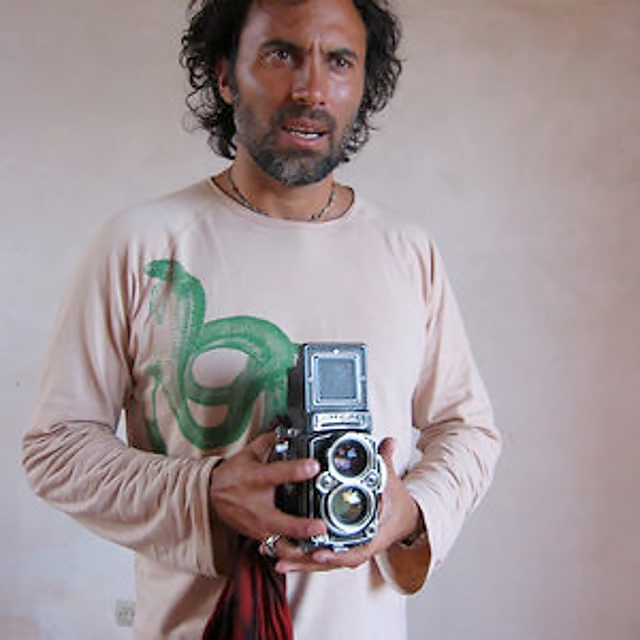Marco was born in Santiago, Chile, in July 1st 1965.
In September 11th of 1973, as the president of Chile was being overthrown by a military coup in the city center, he was struck by the bravery of the photojournalist in the center of it all, risking their life to tell the news story. That day he started to dream in becoming a photographer.
Marco got his first photo assistant job at the age of 12, holding a portable flash to photograph Saturday Night Fever children's party, and was amazed how people became egocentric as soon as he pointed the flash in their direction.
In 1979 he emigrated with his family to New York city. There he was offered a job working for a photographer who was capturing nights in Studio 54 for Andy Warhol's Interview Magazine. That allowed Marco, to start his aesthetic exploration, and to learn how media and politics shaped the world he was living in.
In 1990 he became determined to be a full time artist. He did not allowed himself to do anything that was not related to photography, the history of aesthetic and how we humans interpreted visual information. He started assisting the top International photographers, artist and creative directors of the time and learned to see, analyzed and ask questions.
By the mid 1990s he started getting professional assignments as an art, fashion, travel, portrait and advertising photographer for top brands and top magazines like French Vogue, Condé Nast Travel UK, Elle, Harper's Bazaar, New Yorker Magazine, New York Times, and luxury brands such as Levis, Rolex, Ralph Lauren and Bergdorf Goodman, to mention few.
By 2001 he started producing, directing and shooting Art films for Ralph Lauren, Rolex and LVMH.
In 2002 after meeting and being enchanted by a vision of the American/French/ Moroccan artist Yasmina Alaoui in NYC, they decided to collaborate and explored new areas in Photography, which was changing rapidly because of digital media. By mixing old and new techniques they create "1001 Dreams" series. A project of Love: large formats prints, combining photography and drawing. This work has been exhibited around the world and is part of important collections.
Eventually Marco decided to stop doing commercial work and completely focus and explore contemporary art photography.
In 2007 after years of soul searching for a non orientalist way to portrait Morocco, he started photographing his Tangiers series over the course of 2 years: Documenting the same street intersection taken from the top of a building, always around 4:30 am in the morning, capturing the intersection of the world of the sexes: the men running home from a long night, and the women starting the work day.
This Series was part 2016 Marrakech Biennale, The Pierre Berge Cinematheque Benefit Auction in 2011 in Arle's and Scope Miami 2011 as well print reside in Important collection Internationally.
In 2008 to 2012, inspired by a Weston and a paragraph of Neruda ( It is good, at certain hours of the day and night, to look closely at the world of objects at rest.) he set himself with his Rolleiflex , to photograph his “ Volume and lines” series, capturing the stillness and poetry of water cisterns in the palmeraie of Marrakech. This will take several years to shoot. A meditative project, for which he started to spend a lot of time in North Africa.
In 2012, Cacerolazo project came alive. Commissioned for the 2012 Marrakech Biennale and inspired by the mood of the time, “Jasmine Revolution” and his childhood memories, marching along the women of Santiago who gathered at dusk , to bang their empty pots and pans in loud and peaceful protest in his native Chile streets. Cacerolazo is a personal examination of the strength and integrity of women and of their power to effect transformation. 10 pieces emerges, each from a mosaic of 119 moments capture with Polaroids, arrayed as tiles.
In 2014 he started capturing Moroccan Landscape series, which look natural but have been transformed by humans, and photographed in contemporary neutral tones opposite of a folkloric approach to capturing Morocco. This is an on going project.
Next his photography took a big dive to abstraction. Inspired by Sir, Francis Galton and his techniques of composite images, for the next 7 years he would work on composite nudes, cities, monuments and museums. He felt it was the proper choice to speak about time and space repetition.
He currently working on composite photography, sculpture project and living between New York and Marrakech.
